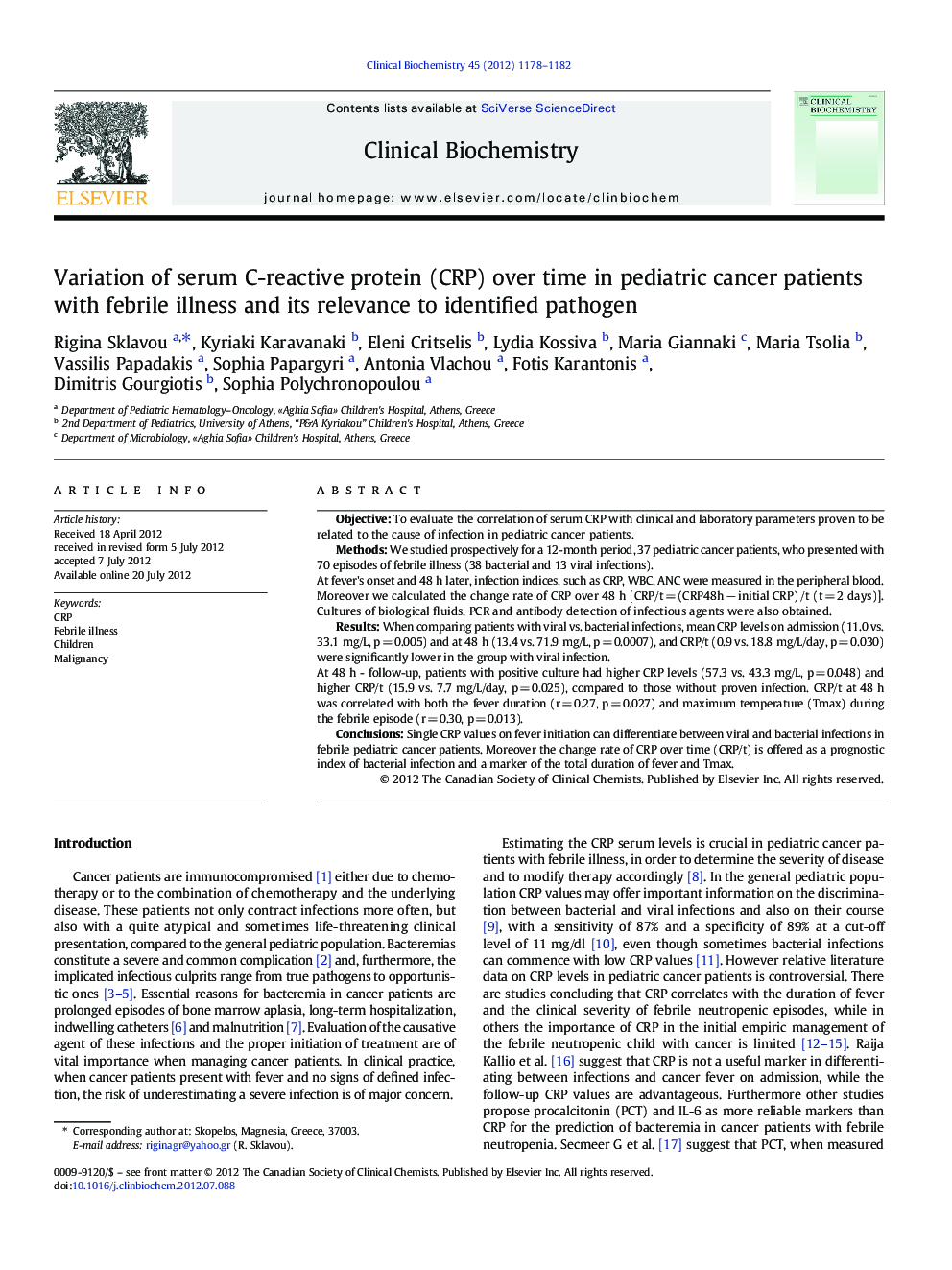| Article ID | Journal | Published Year | Pages | File Type |
|---|---|---|---|---|
| 1968871 | Clinical Biochemistry | 2012 | 5 Pages |
ObjectiveTo evaluate the correlation of serum CRP with clinical and laboratory parameters proven to be related to the cause of infection in pediatric cancer patients.MethodsWe studied prospectively for a 12-month period, 37 pediatric cancer patients, who presented with 70 episodes of febrile illness (38 bacterial and 13 viral infections).At fever's onset and 48 h later, infection indices, such as CRP, WBC, ANC were measured in the peripheral blood. Moreover we calculated the change rate of CRP over 48 h [CRP/t = (CRP48h − initial CRP) / t (t = 2 days)]. Cultures of biological fluids, PCR and antibody detection of infectious agents were also obtained.ResultsWhen comparing patients with viral vs. bacterial infections, mean CRP levels on admission (11.0 vs. 33.1 mg/L, p = 0.005) and at 48 h (13.4 vs. 71.9 mg/L, p = 0.0007), and CRP/t (0.9 vs. 18.8 mg/L/day, p = 0.030) were significantly lower in the group with viral infection.At 48 h - follow-up, patients with positive culture had higher CRP levels (57.3 vs. 43.3 mg/L, p = 0.048) and higher CRP/t (15.9 vs. 7.7 mg/L/day, p = 0.025), compared to those without proven infection. CRP/t at 48 h was correlated with both the fever duration (r = 0.27, p = 0.027) and maximum temperature (Tmax) during the febrile episode (r = 0.30, p = 0.013).ConclusionsSingle CRP values on fever initiation can differentiate between viral and bacterial infections in febrile pediatric cancer patients. Moreover the change rate of CRP over time (CRP/t) is offered as a prognostic index of bacterial infection and a marker of the total duration of fever and Tmax.
► 70 episodes of febrile illness of 37 pediatric cancer patients were studied. ► CRP levels and its change rate over time (CRP/t) were evaluated. ► CRP values could differentiate between bacterial and viral infections. ► CRP/t could be used for Identifying patients at high risk of bacterial infection. ► CRP/t is offered as a marker of the total duration of fever and Tmax.
